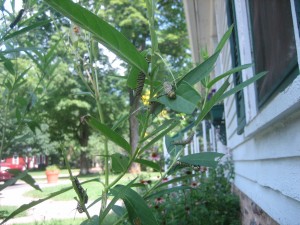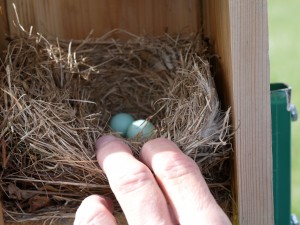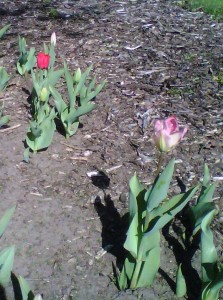
6 Monarch caterpillars feasting on milkweed at Crystal River Inn last summer
(From the Wild Ones Facebook page)
The Winter Population: Population estimates from the Mexican overwintering site indicate that Monarchs lost ground. Their population is down by 28% compared to the previous winter.
A big factor in decline is loss of milkweed. Dr. Karen Oberhauser (MN) co-authored research published in March showing that, in the past decade, there …has been a 58% decline in milkweed and an 81% decline in monarch egg production in agricultural fields of the Midwest. Half of Monarchs come from the Midwest where caterpillars feed on common milkweed. The study ties a decade-long decline in monarch populations to the loss of milkweed from the corn and soybean fields that blanket the region.
The losses of monarchs coincide with the rise in the use of glyphosate herbicide, which kill milkweed and other weeds, while leaving corn and soybean crops (genetically engineered to tolerate the herbicides) intact. They conclude that the loss of agricultural milkweeds is a major contributor to the decline in the monarch population. The smaller population makes the species more vulnerable to other conservation threats. Since this situation is unlikely to change, they encourage land managers and individuals to plant and conserve milkweed. Oberhauser said “it underlines the importance of putting milkweed in garden plantings, prairies, and roadside.”












